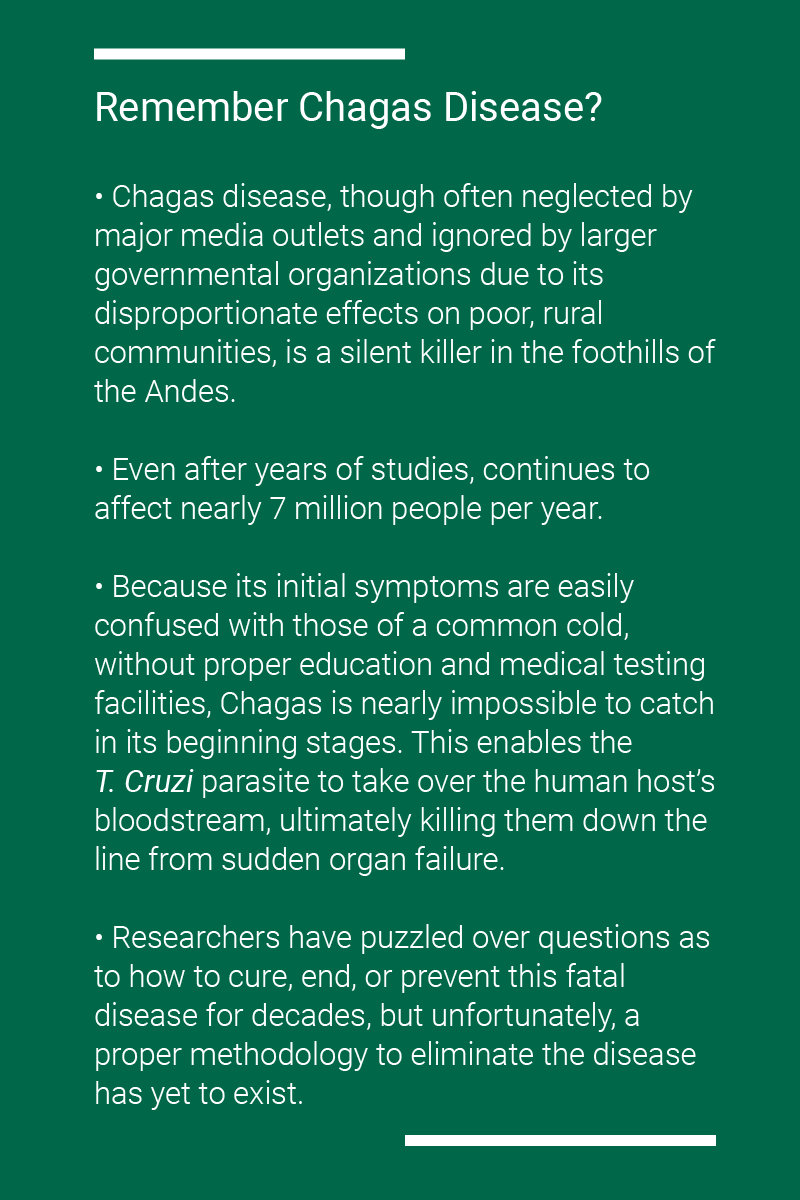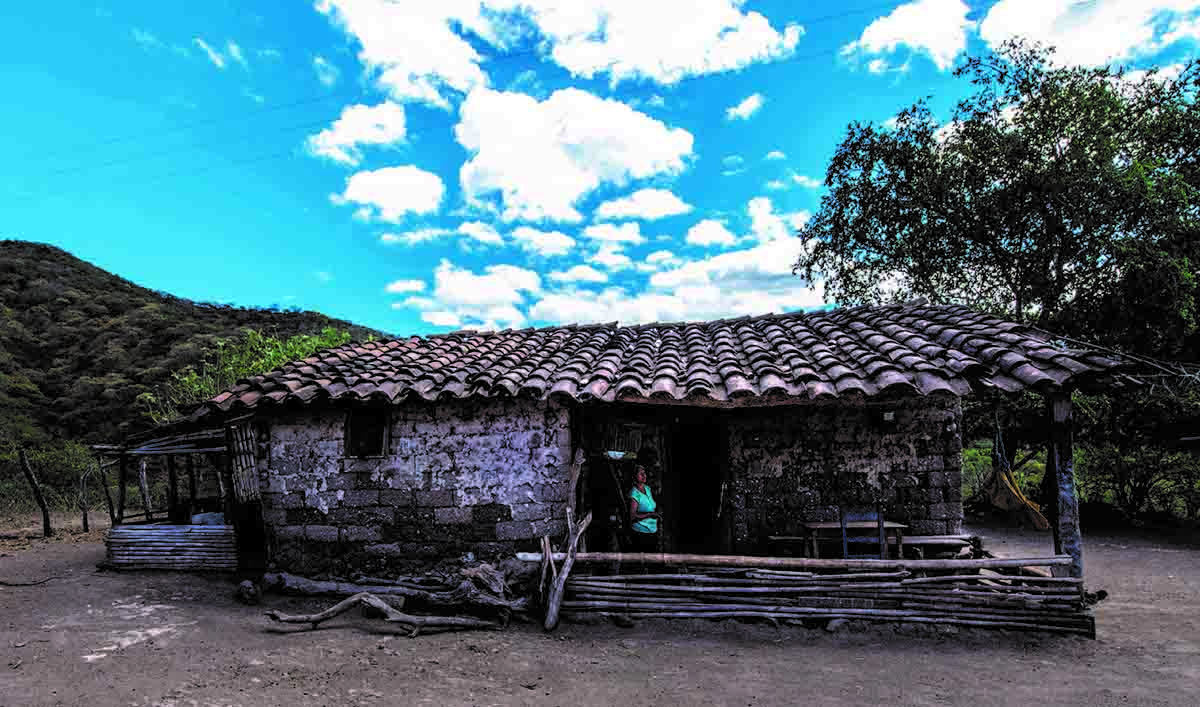By Daniela Grijalva

Picture by ComCienCia.
Sleep Tight, Don’t Let the Bedbugs Bite…
In some communities, this is more than just a bedtime rhyme to spook your kids. In southern Ecuador, it’s in fact a deadly warning to all rural inhabitants. This is because residents live in areas where the endemic Chinchorro, or “kissing bug,” is highly prevalent, and carries within its system the Trypanosoma Cruzi parasite, more commonly known as the causal agent of Chagas disease.

Hiding in Holes, and Striking in Darkness
In order to solve this problem comprehensively, Ohio University’s Healthy Living Initiative, in partnership with the Center for Research in Health in Latin America, has turned its focus to the roots of Chagas disease, hoping to sustainably prevent the disease from its source. After conducting interviews and working hand-in-hand with local stakeholders and communities in the southern region of Ecuador, the team realized that this disease was firmly linked to the poor housing structures that accompany underserved and neglected populations in rural areas. Currently, many homes in rural southern Ecuador are constructed of crumbling adobe bricks and feature roofs and rooflines with many gaps that allow the kissing bugs to enter the home. Once inside, the bugs thrive in the cracks in the raw adobe walls and dirt floors, and feed in the long periods of dark brought on by small or non-existent windows. Under the cover of darkness, Chagas disease is transmitted easily, silently, and victims are vulnerable for the insects to infect.
New Solutions to Change the World
Because Chagas disease is primarily transmitted when kissing bugs enter peoples’ homes and bite them, the best way to fight the disease is to build homes that make it difficult for these bugs to get in at all, and even harder for any invading bugs to hide during the day. Upgrading poor quality housing into stronger, healthier homes is the best hope we have of preventing Chagas disease.
Our team of researchers linked up with cultural scientists, innovative architects, and academics from all walks of life to create “Healthy Homes” as a model for improved housing in rural communities. We consulted with community members to develop designs for an ‘anti-bug’ prototype building structure that integrates traditional building materials and styles. The resulting home prevents bugs from entering the homes, and promotes healthy habits and lifestyles within the home area.

Picture by ComCienCia. Old house, before H3L intervention.
Spread the Change, One House at a Time
This project proposes an innovative and transferable infrastructure model that simultaneously supports economic development and eliminates health risks for vulnerable populations. The Healthy Homes we are constructing alongside the communities represent a sustainable model that not only prevents Chagas disease, and other diseases transmitted by insects dwelling in the home, but also improves the general well-being of families, provides work opportunities, and promotes healthy living behaviors. So far, we have achieved success with seven new constructions in the communities of Guara, Bella Maria, and Chaquizca in Loja Province, and will be resuming construction of subsequent houses when the threat of zoonotic diseases, such as COVID-19, diminish. We believe that the success of this project will lead to the expansion of this strategy to other communities within southern Ecuador and, ultimately, help achieve the effective and sustainable prevention of diseases of poverty while expanding opportunities for all peoples with restricted potential.


